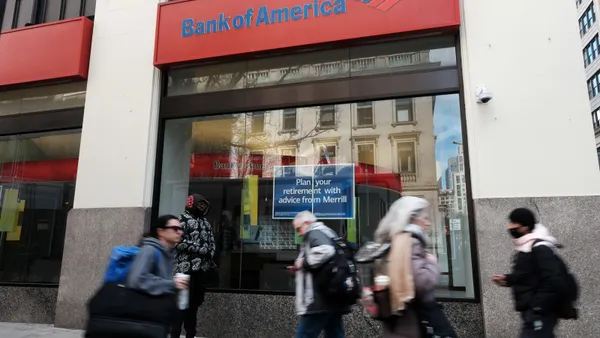Fintech MoneyLion is collaborating with Ernst & Young, aiming to “drive innovation and growth” in the banking space, the companies announced Tuesday.
The partnership, the companies said, will aim to leverage MoneyLion’s embedded marketplace infrastructure and combine it with EY US teams’ core banking offerings, with the goal of enhancing traditional financial institutions’ technological capabilities.
Dee Choubey, CEO of MoneyLion, believes the new technology can help many smaller and mid-sized financial institutions offer more convenient capabilities to their customers. The alliance’s primary objective is to co-build turnkey solutions for banks — a platform for them to “activate, identify and expand their clients’ reach to get more stable deposits,” he said.
The partnership will help banks diversify their existing revenue streams by implementing comprehensive marketplaces inside their ecosystems and give clients a holistic experience with a bank, leading to increased cross-selling revenues for that bank, Choubey told Banking Dive.
“Banks are always looking to diversify their noninterest revenue. They are always looking to add more capabilities that they can take to their clients, who over time [and] over years have built up very meaningful relationships with their bank,” Choubey said. “But they are really constricted by the core technology that allows them to offer this product. And I think that is where the technology that we build at MoneyLion with the help of EY’s vantage point into the banking sector to really be a game changer.”
EY focus
EY is focused on banks largely in the sub-$200 billion asset category, with many of them concentrated in the $1 billion to $10 billion category. It wants to help them nearly “double” their reach and the market for customer acquisition and relationship deepening faster, Nikhil Lele, EY financial services consumer banking leader and EY-MoneyLion Alliance leader, told Banking Dive.
“That is what the entire solution that we have really jointly constructed with MoneyLion is focused on — it’s driving the acquisition potential, extending your reach to many, many more effectively — our research showed double the amount of digitally active consumers, and then also doubling the capability of driving single product relationships into becoming more multi-product relationships,” he said.
The global firm sees the alliance as having roughly $4.5 trillion of “addressable market potential” for only smaller banks — a unique potential with over $20 million incremental revenue growth opportunity over the next three or four years, according to Lele.
“So, this is what we are really focused on: making sure that the smaller banks can help each of them individually capture their share of that value equation in the market that we have evaluated,” he added.
The solution aimed at the b2b marketplace will follow the typical cycles associated with it after the announcement — business development and implementation activity followed by gaining the relevance of scale across multiple client implementations. According to Lele, the next three months will be focused on generating the initial proof of concept for the clients and establishing credibility in terms of value.
However, he thinks the company can hit scale later this fall in terms of the number of clients.
With around a year of brainstorming and whiteboarding sessions, the two companies developed the solution to create a comprehensive financial platform that would have been hard for banks to find around a decade ago, Choubey noted.
Lele pointed out that EY teamed up with MoneyLion because both agree that banks need to grow, especially amid the changing landscape in the financial sector.
Artificial intelligence is the foundational tool that the New York-based company uses to instantly match consumers seeking financial products and all the financial product partners. Banks have massive data sets they can leverage to give consumers the answers they seek.
“This is where we say that the consumer is used to TikTok, but banks are not used to providing TikTok-like experiences, right? It’s very convoluted,” Choubey said.
Compliance issues
And when it comes to using data in the financial services industry, compliance comes into play.
“We are a deeply trusted, highly credible firm that is very knowledgeable on the regulatory evolutions in the consumer space with deep knowledge in relationships across the regulatory landscape. We are working already with several banks, who are undergoing significant scrutiny for their embedded marketplace and banking-as-a-service programs. Therefore, that expertise is really important,” Lele said.
“We are bringing scale infrastructure with the know-how to actually implement in the banking sector…[with] safety and soundness at the forefront that doesn’t have a competitor in a direct sense right now,” he added.






















